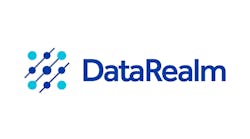Austin, Texas, December 15 – Emerson Process Management’s Smart Wireless technology has proven to be “extremely cost-effective and reliable” in providing continuous performance data on critical boiler feed pumps at the Montour power station, as well as feedwater and air heaters at the Brunner Island Unit 1 of PPL Generation. “The additional information provided by the wireless instruments allows us to more effectively monitor the mechanical and thermal performance of these valuable assets,” according to Joe Murach, supervisor of equipment reliability.
Key temperature and pressure measurements were not available previously to populate software designed to analyze thermal performance and determine preventative maintenance schedules. Company officials have long wanted to obtain this information, but the high cost of installing wiring was a roadblock they could not overcome. Wireless was the only option for obtaining the needed data, Murach said.
Emerson’s Smart Wireless technology was chosen following an on-site demonstration that proved its ability to transmit reliably despite the dense infrastructure of the power plant. Then Rosemount wireless transmitters were installed at the Montour plant to monitor suction pressure and DP across the suction screen, as well as other points that provide valuable insight as to the overall condition of the feed water pumps.
A Smart Wireless network was installed at the Brunner Island plant to include wireless measurements that help determine thermal efficiency of the feed water heater and the air preheating systems. Over 25 wireless transmitters were installed in a widely distributed layout around the unit’s feedwater and air heating systems. These points are pulled into the plants historian, as well as its reliability monitoring software.
“The Emerson technology is able handle the power plant environment,” Murach said. “The transmitters communicate with the gateway without a problem even across several floors and through walls. Going wireless eliminated the need for drilling through concrete decks, installing conduit and cable trays and pulling wires. Instead, we have an easily installed, cost-effective and reliable wireless network.”
Each wireless device in the PPL self-organizing network acts as a router for other nearby devices, passing messages along until they reach their destination. If there is an obstruction, transmissions are simply re-routed along the mesh until a clear path to the Smart Wireless Gateway is found. As conditions change or new obstacles, such as temporary scaffolding, new equipment, or a parked construction trailer, are encountered, the self-organizing wireless network simply finds a way to deliver the messages.
All of this happens automatically, without any involvement by the user, providing redundant communication paths and better reliability than direct, line-of-sight communications between individual devices and their gateways. This technology optimizes data reliability while minimizing power consumption. It also reduces the effort and infrastructure necessary to set up a successful wireless network.



